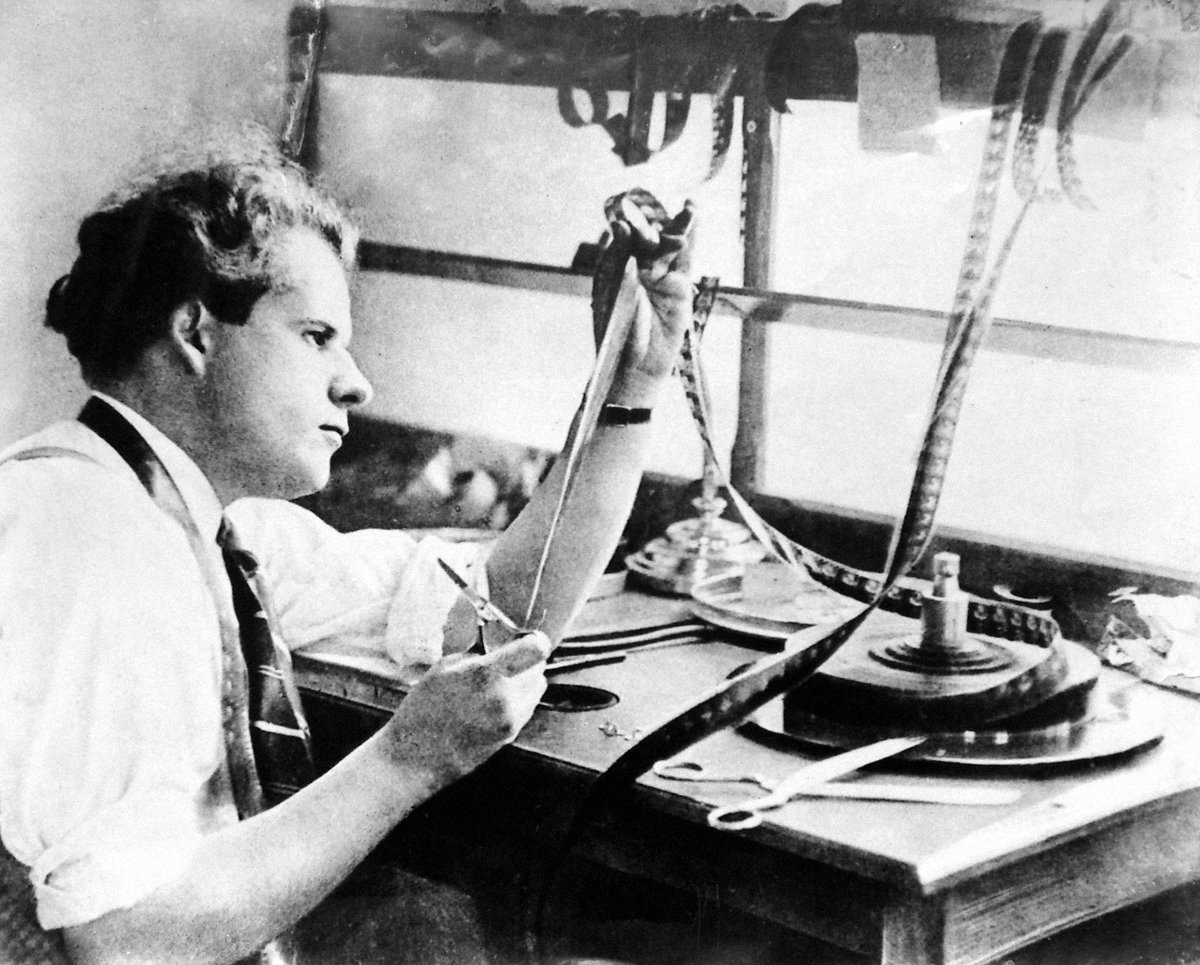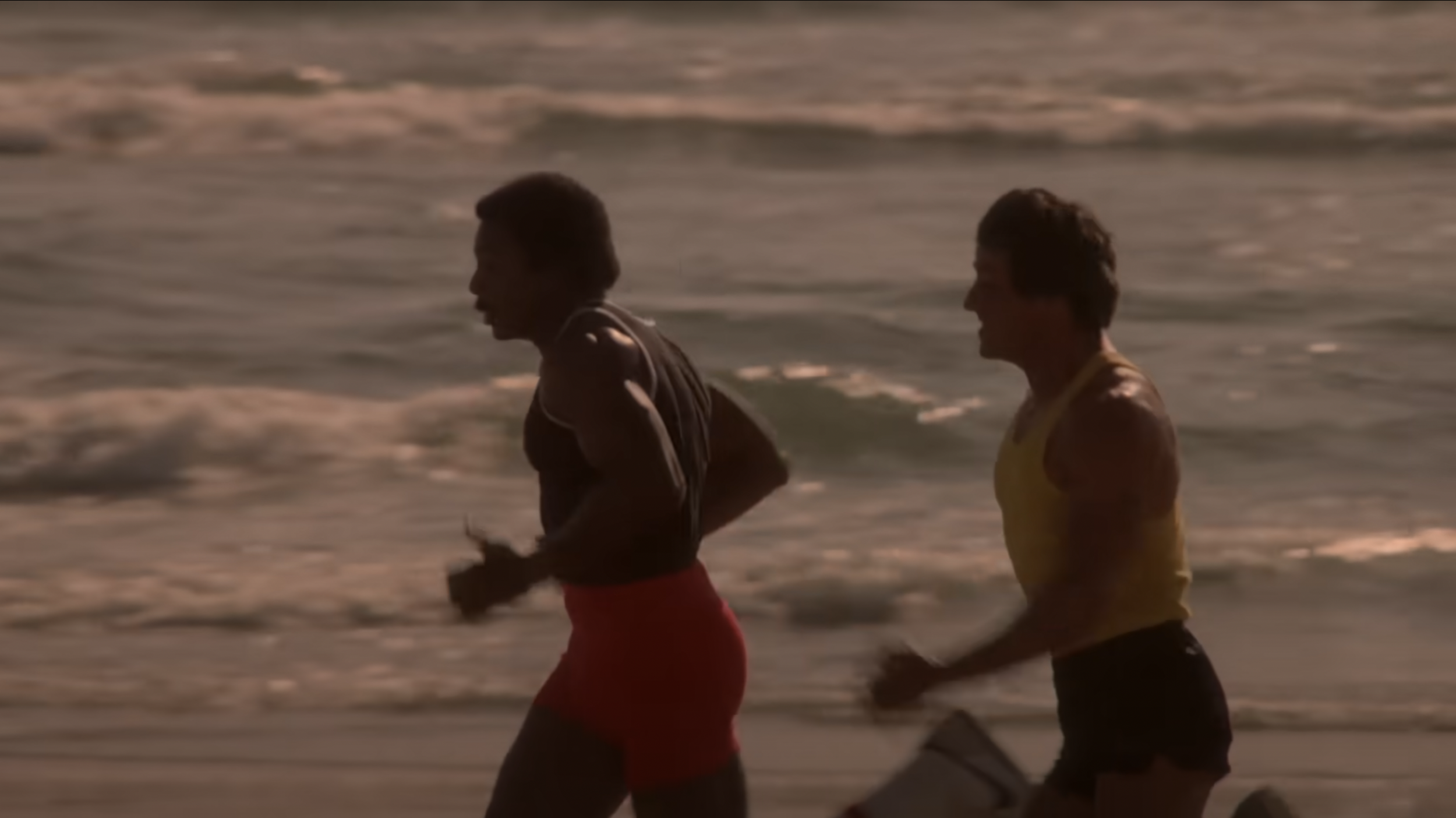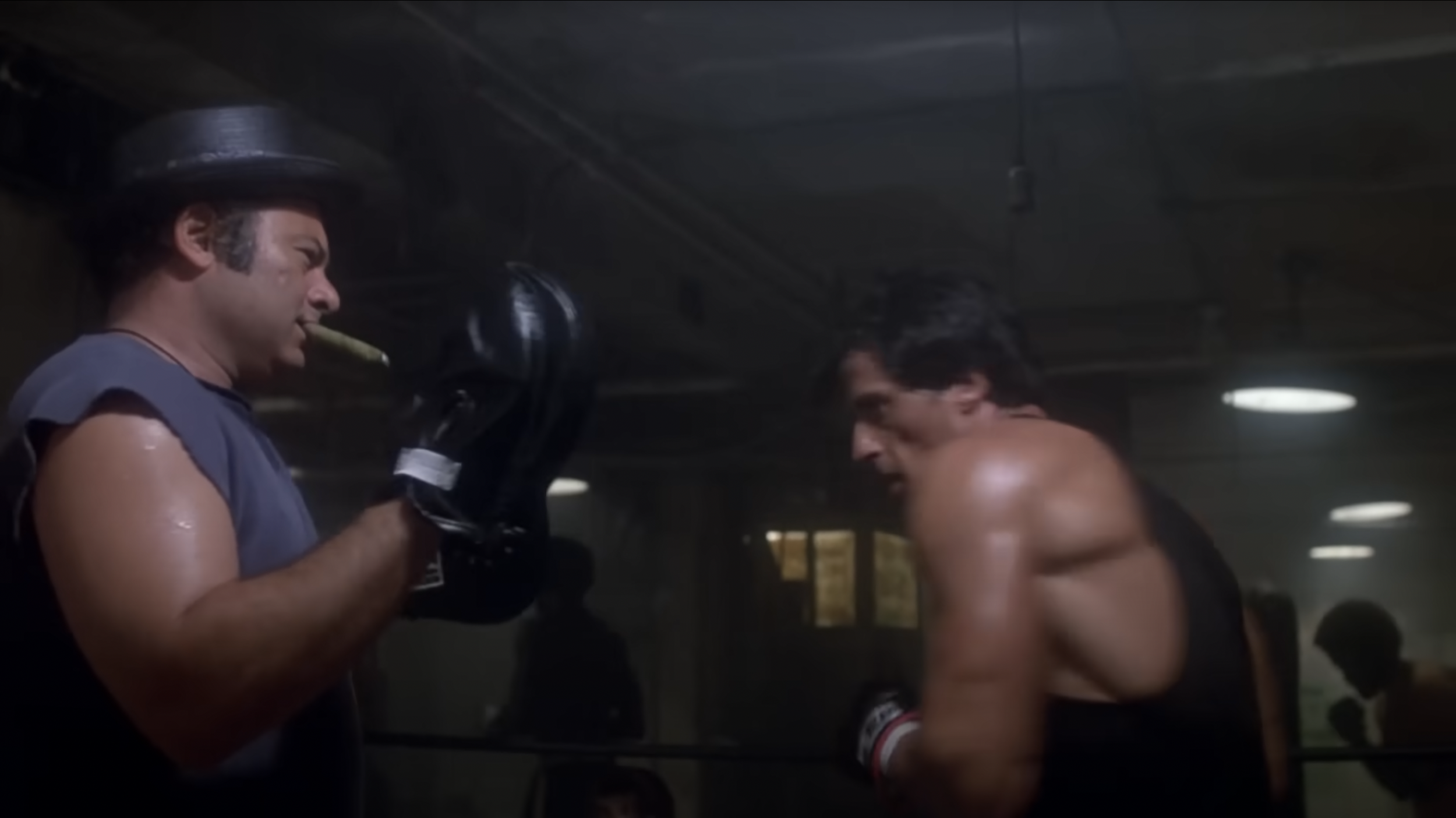
Film Editing
Oscar Scannell
BTEC Media
Unit 21
Task 1
2025
Oscar Scannell BTEC Media Unit 21 Task 1 2025
this webpage has been designed to be viewed on a computer rather than a mobile device.
Non-continuity editing
What is it?
A break from classical Hollywood continuity editing (invisible editing)
Emphasizes disorientation, fragmentation, or disruption of time & space
Used to create meaning, evoke emotion, or challenge audience expectations
A brief history.
Filmmakers like Sergei Eisenstein and Jean-Luc Godard disrupted established cinematic forms, reshaping the way stories are told on screen.
By challenging traditional techniques, they introduced new methods of editing, narrative structure, and audience engagement, leaving a lasting impact on the film industry.
Sergei Eisenstein, a Soviet director, pioneered the theory of montage, using rapid, disjunctive editing to create intellectual and emotional effects.
His film Battleship Potemkin (1925) exemplifies this with the Odessa Steps sequence, where quick cuts and dynamic framing intensified the drama.
Eisenstein’s approach proved that editing was more than a technical process—it was a powerful storytelling tool that could manipulate time, space, and meaning.
Jean-Luc Godard, a leading figure of the French New Wave, rejected classical Hollywood continuity in favour of jump cuts, non-linear narratives, and unconventional storytelling.
His film Breathless (1960) broke cinematic norms with its fragmented editing and improvised dialogue, challenging the polished style of mainstream cinema. Godard’s work blurred the lines between fiction and reality, encouraging filmmakers to experiment with form and structure.
The influence of Eisenstein and Godard can be seen in contemporary cinema, from the fast-paced editing of action films to the experimental narratives of independent cinema. Directors like Quentin Tarantino and Christopher Nolan have drawn from their innovations, using montage and narrative disruption to engage audiences in new ways.
By breaking the rules of their time, Eisenstein and Godard expanded the possibilities of film, inspiring generations of filmmakers to push the boundaries of storytelling.
Non-continuity editing techniques
Jump Cuts – Abrupt transitions between shots of the same subject.
Match on Action Disruptions – Inconsistent cuts within a movement
When the editor cuts from one shot to another view that matches the first shot's action, creating seamless continuity and maintaining the illusion of fluid movement
Montage Editing – Rapid sequences that condense time, often set to music
Breaking the 180-Degree Rule – Crossing the axis of action to create disorientation
Nonlinear Editing – Scenes presented out of chronological order
Further TV and film editing techniques
Motivated / parallel editing
Cutting from one scene to another, or cutting from one character to another.
Each cut motivates the audience’s emotions and causes them to have a reaction.
The audience is guided by the editor to believe something specific is happening.
Silence of the Lambs (Demme, 1991). Demonstrates motivated editing in this scene. Two separate scenes unfold simultaneously; The police raiding a house and another scene showing the villain in his home.
The audience is led to believe that they make some link, even though they don't.
Providing & withholding information
Withholding information keeps audiences engaged, encouraging them to actively piece together clues.
Providing crucial details at the right time drives the narrative forward and prevents frustration.
Misdirection through editing can lead to red herrings, maintaining intrigue.
Jump cuts and ellipses can omit key moments, forcing the audience to deduce what happened
Creating suspense
Suspense is generated through slow editing, reaction shots, and withheld information.
Cross-cutting between two parallel actions increases tension as the audience anticipates their intersection.
Long takes with minimal cuts create unease by making the audience wait for the next event.
Sudden, unexpected cuts can create shock or emphasize important moments.
There are three ingredients to suspense: time, stakes, uncertainty.
You can use lots of noise or even silence or quietness to put the order on edge
Sustain uncertainty by not letting the audience not know what is happening
Sometimes the lack of music makes the situation more tense
Experiment with shot size and lighting, restrict the audiences view to add focus or add suspense
Using editing to control time, drag out scene to build suspense
Creating pace
Quick cutting can build urgency and create a sense of chaos, particularly in action-packed sequences.
Slow, deliberate editing draws out tension and makes each moment feel significant.
Alternating between fast and slow editing creates contrast, making dramatic moments more impactful.
Rhythmic editing can match music cues to heighten emotional engagement.
Juxtaposition
Editing juxtaposes images to create new meaning through contrast or association.
Placing two unrelated shots together can suggest a deeper connection between them.
Kuleshov Effect: The idea that viewers derive meaning from the combination of two successive shots rather than an individual image.
Parallel editing (cross-cutting) can compare and contrast different storylines or perspectives.
Emotional Connection
Editing influences how we emotionally connect with a character by placing us in their perspective.
Subjective point-of-view editing (POV shots) allows audiences to see events as the character experiences them.
Reaction shots enhance emotional connection by focusing on facial expressions.
Slow-motion or extended takes can emphasize a character’s emotional state, making their experience more immersive.
Use of montage sequences can provide insight into a character’s psychology and personal history.
Time manipulations
Introduction to time manipulation
Manipulation of time is the technique of altering the natural flow of time within a scene.
This can be done through slow motion, fast motion, or time jumps to emphasize tension, create suspense, or show a character's perception of events.
It is often used in action, thriller, and mystery genres to heighten drama.
In Inception (2010), different dream levels move at different time speeds, creating tension as the protagonists race against time.
In the murder mystery Sherlock (BBC, 2010-2017), time manipulation through slow-motion deductions allows viewers to see Sherlock’s thought process in real-time, making his intelligence more visually engaging.
Freeze-frames
A freeze frame holds a single moment in time, drawing attention to an important detail, emphasizing a character’s emotions, or creating a sense of reflection.
It is often used to break the fourth wall or reinforce narration.
In Goodfellas (1990), Henry Hill’s freeze-frame moments coincide with his voiceover, reinforcing key turning points in his life and immersing the audience in his perspective.
In Killing Eve (2018-2022), freeze frames are used to highlight Villanelle’s psychological state, pausing at critical moments to show her emotions in a way that adds depth to her character.
Fades
Fades create smooth transitions between scenes, using gradual shifts to or from black or white to indicate changes in time, mood, or narrative structure.
Fade to Black is commonly used to signal the end of a scene or create suspense, as seen in Chernobyl where it builds dramatic tension between moments of action.
Fade to White is often associated with memories, the afterlife, or dreamlike states, as seen in The Others (2001), where it reinforces the film’s eerie revelations. Fade Up/Down transitions help establish new scenes or signal shifts in time, as demonstrated in The Godfather (1972), where slow fades reinforce the passage of time and power shifts within the Corleone family.
In Knives Out (2019), fades to black heighten suspense during interrogations, leaving the audience uncertain about what will happen next.

Analysis 1: Everything, Everywhere, All At Once
After its 2022 release, the critically acclaimed movie Everything Everywhere All at Once swiftly gained widespread popularity. The movie, which was directed by Daniel Kwan and Daniel Scheinert, combines comedy, action, and science fiction to tell the tale of a Chinese-American woman who learns that in order to save reality, she must communicate with different versions of herself, througout the multiverse. The film, which starred Michelle Yeoh, Ke Huy Quan, and Stephanie Hsu, received numerous awards for its uniqueness, nuanced storytelling, and emotional depth. It became A24's highest-grossing movie with a global box office total of over $140 million and took home seven Academy Awards, including Best Picture, Best Director, and Best Actress for Yeoh.
Example clip
This clip is towards the end of the film, as the verse jumping and mental struggles is starting to take a toll on Evelyn;s sanity. Evelyn becomes extremely unhappy and frustrated due to the intricacies of her life, which include tense family ties, financial strains, and the bizarre multiverse revelations, going as far as to sign the divorce papers that her husband had been filling in towards the start of the film. Her internal conflict as she struggles with the chaos around her is captured in this scene, which culminates in an unfiltered and powerful emotional outburst.
Film editing analysis
The way the movie defies conventional editing conventions to depict various realities is among its most thrilling elements. For instance, the film jumps suddenly and unpredictably from one world to another when Evelyn begins to experience other multiverses. She could be sitting in an office one minute, and then standing in a broom cupboard. The audience experiences the same sense of confusion as Evelyn due to these abrupt and sudden changes. The movie employs these jumps, rather than a seamless transition between scenes, to remind audiences that anything can occur in the multiverse.
There are numerous jump cuts and quick montages throughout the film, particularly in action sequences and when Evelyn is interacting with different versions of herself. Another highlight is the montages in which Evelyn's face rapidly switches between hundreds of versions of herself, each representing an entirely different life within her multiverse. The audience gets a sense of the sheer number of possibilities of her lifef from these brief flashes. Without requiring lengthy explanations, the editing effectively conveys the overwhelming nature of the multiverse by showcasing so many Evelyn incarnations in a brief period of time.
Similarly, another method the movie employs to connect the universes is match cuts. In one scene, for instance, Evelyn is engaged in a fight, and the film alternates between her in multiple realities. In one universe, she is defending herself from an attack with a knife, but in another, she is doing the same thing while holding a spatula, as she is controlling the other version of herself, using the powers that the other versions have. These cuts serve to highlight the fact that, despite the vast differences between the universes, Evelyn's choices and actions are consistent throughout them.
Particularly in the fight scenes or when Evelyn is switching between universes, the fast-paced editing maintains the intensity and keeps up the audience's attention. The audience feels as though they are being drawn into this chaotic world with her due to the rapid transitions. The movie also knows when to slow down, though. For instance, the editing allows for greater breathing room in emotionally charged scenes, such as when Evelyn speaks to her daughter Joy. The audience is kept engaged in the narrative without feeling overwhelmed by the contrast between the fast and slow parts.

Analysis 2: Rocky III
The critically acclaimed Rocky III solidified its position as an important instalment in the very popular sports drama series following its 1982 release. The film, which was written and directed by (and even starring) Sylvester Stallone, focusses on boxer Rocky Balboa's battle to adjust to stardom and protect his title from a formidable new opponent. With Stallone, Talia Shire, Carl Weathers, and Burgess Meredith all returning in the cast from the previous Rocky, the film explores themes of resilience while striking a balance between intense action and emotional depth. Rocky III became a global sensation, earning over $270 million and further establishing the franchise's place in popular culture.
Example clip
The training montage, which blends narrative with striking imagery, is among Rocky III's most recognisable scenes. To get back his mojo after losing badly to Clubber Lang, his opponent, Rocky teams up with Apollo Creed, a former rival. The montage, which depicts Rocky's transformation as he takes up Apollo's training methods, which emphasise speed and agility, is set against the backdrop of Los Angeles. The scene on the beach marks the end of the sequence and represents Rocky's restored determination and competitive spirit.
Clip Analysis
The sequence makes extensive use of rhythmic cuts that match the music. This represents Rocky's journey from hopelessness to resolve by reiterating the training's intensity and momentum. The quick cuts between images of Rocky running and practicing agility exercises visually represent the increasing level of concentration and effort needed to succeed. The scene is given energy and urgency by the pacing, which highlights Rocky's transformation.
Rocky's movements are regularly juxtaposed with Apollo's throughout the montage, which depicts the mentor exhibiting techniques and the student attempting to imitate them. Both are frequently present in the same shot. These two characters' close interaction visually highlights their developing friendship and Rocky's readiness to adjust to a different training method. This emphasises the bond between the two, showing Rocky's will to grow and learn while also presenting Apollo as a guiding influence.
Additionally, the editing contrasts Rocky's early struggles when he starts training with his him being more able. For example, it switches between shots of him struggling to keep up with Apollo's speed and scenes where he successfully matches his mentor, like during their beach sprints towards the end. This editing reflects Rocky's development and acts as a visual metaphor for his internal journey from self-doubt to self-belief.

Analysis 3: Knives Out
The popular murder mystery film Knives Out quickly gained widespread popularity after its 2019 release. Rian Johnson, the film's director combined comedy, drama, and mystery. Its "whodunit" story was enhanced by the cast, which included Daniel Craig, Ana de Armas, Chris Evans, and Jamie Lee Curtis. Knives Out, which received high ratings for its sharp writing and novel take on the traditional murder mystery genre, made over $312 million worldwide on a $40 million budget. It received numerous nominations for awards, including the Academy Award for Best Original Screenplay. It won awards such as a Saturn Award for best editing.
Example Clip
In this scene (SPOILERS!!), Detective Benoit Blanc confronts the Thrombey family with a big realisation: he was hired anonymously to look into Harlan Thrombey's death by his grandson, Ransom Drysdale. This turn of events changes the investigation's focus and reveals Ransom's deeper role in the family's problems. The scene reveals the complex web of deceit surrounding Harlan's death, which shows Blanc's keen detective abilities.
Film editing analysis
The way the movie uses subjective flashbacks is among its best editing features. The movie shows visual flashbacks that fit the points of view of the characters as they narrate their versions of events, so highlighting often contradictory and biassed viewpoints. For example, each Thrombey family member's version of Harlan's birthday celebration differs from each other in the first interviews, emphasising their individual experiences. This method not only gives the narrative layers but also invites viewers to actively help to untangle the truth by themselves. These often have narration, especially during scenes in which Blanc is describing what he thinks happened to the characters in real time, and the audience is watching what he is describing.
The movie also uses montages deftly to succinctly present difficult material. Often accompanying Detective Benoit Blanc's deductions are quick sequences that piece together hints, enabling the viewers to follow his line of thinking. These montages guarantee that viewers stay interested without feeling overburdened by exposition and help to preserve the film's sharp pace.
Another important element enhanced by the film's editing is pace. The story moves at a pace that has a mix between suspense and relief, keeping viewers on edge, but also offering some light-hearted moments. The deliberate placement of revelations and huge plot twists guarantee that interest never fades and the narrative moves naturally towards its climax.
Editing also helps add to the depth of the film's ideas and messages. The movie investigates ideas of truth, dishonesty, and social class by contrasting the viewpoints of several people. Editing emphasises the underlying moral themes of the story by contrasting Marta's real concern with the Thrombey family's dishonesty.
In conclusion, Knives Out is a convincing and provoking murder mystery in great part due to the editing. By means of its creative use of flashbacks, montages, and pacing, the film not only honours classic whodunits but also presents a fresh, modern perspective that excites viewers and motivates active participation with the narrative.







